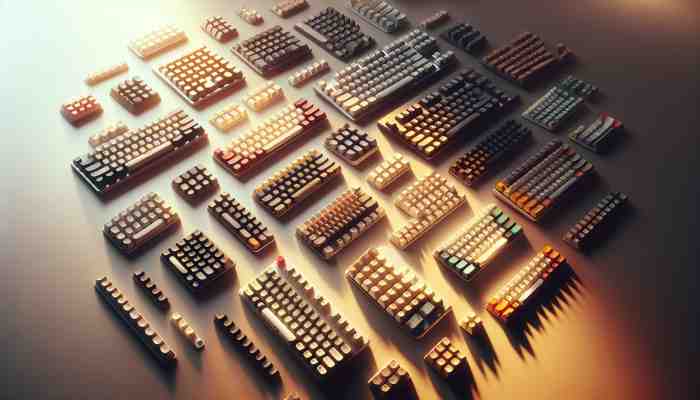# How Keyboard Layouts Impact Typing Speed and Comfort
Have you ever pondered while tapping away at your keyboard, why some days it feels like your fingers are dancing a graceful ballet and other days, they're just clambering clumsily across the keys? Whether you're a software engineer coding your way to glory, a writer crafting your next work of art, or a data geek crunching numbers, the efficiency of your typing can drastically alter the landscape of your workday. At TypeTest.io, we understand this more than anyone. Today, let's pop the hood and look underneath the interface at one of the essential yet overlooked aspects of typing prowess: keyboard layouts.
# Standard Layouts: A Look at QWERTY
The old trusty QWERTY layout is like the comfortable couch everyone loves — familiar and reliable. Designed in the 1870s, it's built not for speed but to prevent typewriter jams by spacing commonly used letter pairs. As a result, it's not exactly optimized for speed in the electric era, presenting challenges for those chasing WPM (words per minute) records.
# Dvorak Simplified Keyboard: The Speedster's Choice
Enter Dr. August Dvorak. In the 1930s, his answer to QWERTY's inefficiencies led to the Dvorak keyboard layout. Architectured to increase speed by placing the most common letters under the strongest fingers and minimizing finger movement, users have reported swifter typing speeds and enhanced comfort. The learning curve is akin to switching from automatic to manual driving, but the gains in typing tests are often worth the grind.
# Colemak: A Balancing Act
The newer contender, Colemak, remixes the QWERTY layout slightly, making it easier to adopt while still providing efficiency enhancements. It claims to optimize finger movement for faster typing and boasts a comfort level that could see you bidding adieu to those frustrating typing errors. It’s much like swapping a standard car with a custom-tuned one — better performance without complete unfamiliarity.
# Other Layouts: Exotic choices for the Adventurous
For the lovers of novelty and customization — typists looking to dial into niche skills — exotic layouts like Workman, NEO, or BÉPO offer intriguing alternatives. These layouts are less about raw WPM speed and more about fitting specific ergonomic and linguistic needs, potentially reducing the strain on hands during marathons of data entry or novel writing.
# Typing Speed and How Layouts Make a Difference
While switching layouts might seem like donning a new set of digital threads, the implications for your typing speed and comfort can be profound. At TypeTest.io, our typing tests reveal that while the learning period can affect initial speeds, seasoned users of alternative layouts often outpace their QWERTY counterparts, especially in long-term comfort and reduced finger travel.
# Comfort Over Speed — Or Both?
Consider this: typing isn't just about speed. It's about sustainability. Our tests at TypeTest.io indicate that while alternative layouts could boost WPM, reductions in typing-related strain are equally significant. Less discomfort means longer, more productive typing sessions — a crucial consideration for those long hours of coding, writing, or gaming.
# Making the Switch: Is it Right for You?
Transitioning to a new keyboard layout is an investment of time and effort. For those who type extensively, the payoff in speed and ergonomics can be worthwhile. We recommend setting realistic goals: perhaps start with part-time practice or use dual layouts during the transition phase.
Remember, the ultimate choice depends on your needs, habits, and how much you’re willing to adapt in pursuit of typing excellence. The right layout is a powerful tool, not just in boosting your WPM but in maintaining your most valuable asset — your hands.
Are you ready to challenge your traditional typing habits and explore new territories in keyboard efficiency? Head over to TypeTest.io, take a typing test with your current layout, then consider experimenting with a different one based on your needs and our insights. Discover whether a change in scenery can bring a boost in speed and a decrease in effort for your typing adventures.
